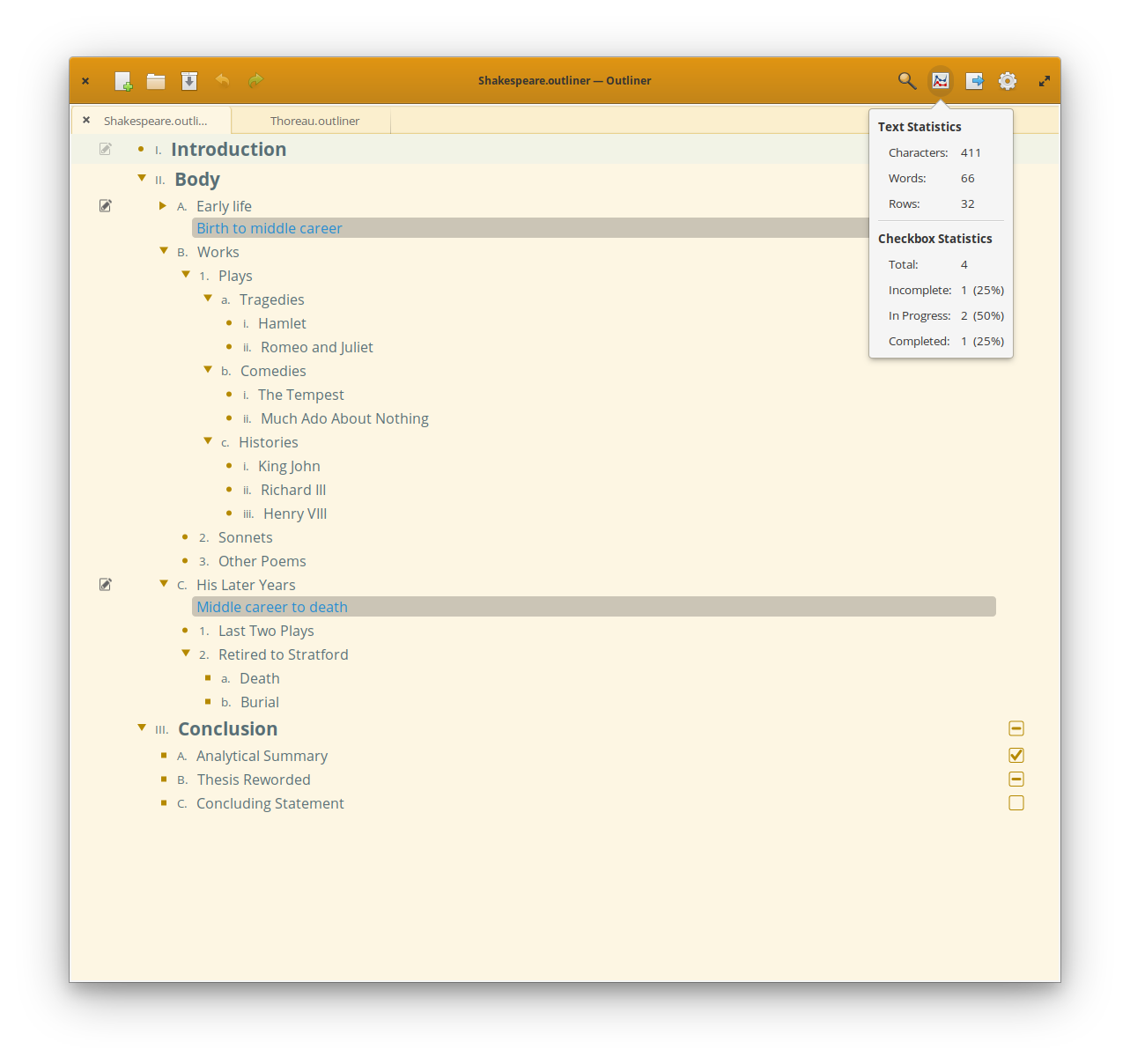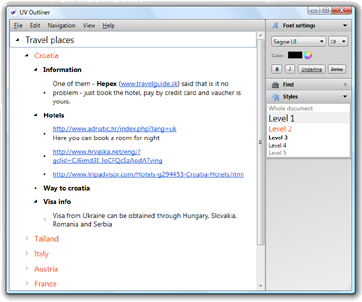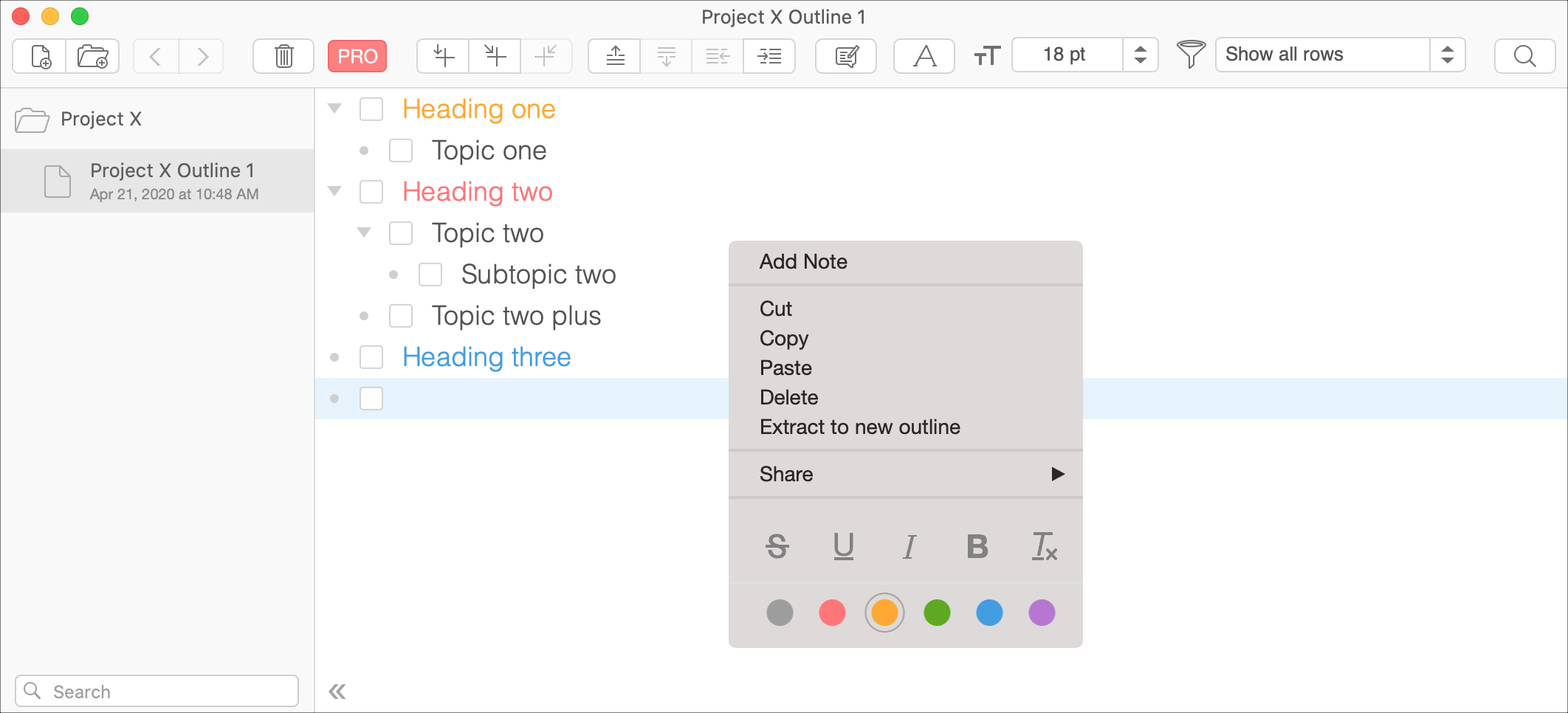

Have a feature request? Now is the time to get involved!īike is a free download but you'll need to buy a license to use it - something you can do via the link in-app or the app's website. That last bullet point is an important one - anyone downloading Bike right now can have a say in how the app grows. Rich text, themes, and plugins are features I'll work on next. Be an early adopter and help shape Bike's future. Use AppleScript to control and automate Bike and integrate Bike with other scriptable applications. bike file format is HTML–you can view it in your web browser. Bike is a macOS native app and passes the Moby Dick Workout. Bike respects your computer's memory and battery.Text editors are freeing but weak on structure. Outliners are powerful but constraining.

It's custom built to provide a fast and fluid outlining experience. The OPML editor uses the created attribute in an RFC 822 date format to indicate when the node was created (I guess that was obvious). For instance, RSS readers will often set the type to "rss", the url to the Webpage and the xmlUrl to the RSS feed URL. The xmlUrl is usually set to an RSS, Atom or OPML file. I would treat them as the same and suggest OPML readers check for both. RSS readers usually use the url attribute to indicate the homepage of the blog or RSSified resource.Īlthough many RSS readers use url to indicate the blog or RSSified resources, others use htmlUrl to indicate the same.
Free opml editor outliner pdf#
In the OPML editor, this may be a simple Webpage, Weblog, PDF or any document addressable on the Web. The OPML editor and many RSS readers use the url to indicate the external location of the. I suggest OPML readers should check for both text and title and publishers should avoid title entirely, or publish both title and text identically. The error has propagated as most OPML programmers simply copied these initial implementations, without reading the specification. The mistake is confusing OPML authors. This mistake was made by the implementers of the first RSS readers that imported and exported OPML. The isComment and isBreakpoint attributes are IMHO very rare and I can't add any detail beyond the spec.įollowing are the attributes, not described in the OPML spec, but often found in the wilderness of the Web.Ī very common mistake in OPML is to use the title attribute instead of text attribute when giving the outline a title. By convention if an outline is commented, all subordinate outlines are considered to be commented as well. IsComment isComment is a string, either "true" or "false", indicating whether the outline is commented or not. This attribute is mainly necessary for outlines used to edit scripts that execute. IsBreakpoint isBreakpoint is a string, either "true" or "false", indicating whether a breakpoint is set on this outline. The definition of text from the spec, I believe is obvious and doesn't warrant further explanation. There is no specific limit on the length of the text attribute.Īs I'll explain later, some authors have chosen to use title in place of text. Text text is the string of characters that's displayed when the outline is being browsed or edited. On a rare occasion, I've seen the type set to 'atom' when the points to an external atom feed, but the convention has been to set the type to 'rss', even when the is an external atom feed. I suggest OPML readers treat the type attribute as case insensitive and publishers avoid confusion by using lower-case "link" and "rss". The capitalization of type attribute is not standard and is often written "RSS". RSS readers that import and export blogrolls and reading list, often set the type to "rss". Whereas, when the OPML editor identifies a link to another Web document, the type is often set to "link". For instance, if the is a container of other outlines, the type attribute is most often missing. The type is used to describe the type of current. Type and text are the two most common attributes. Type type is a string, it says how the other attributes of the are interpreted.

Let's begin by enumerating the spec'ed common attributes and where-how they are used. This document is an attempt to describe how people have been using the attributes in OPML applications. This was intentional to allow the format to grow at the level. The OPML spec isn't entirely clear as to what attributes of the element are available and what they mean.


 0 kommentar(er)
0 kommentar(er)
